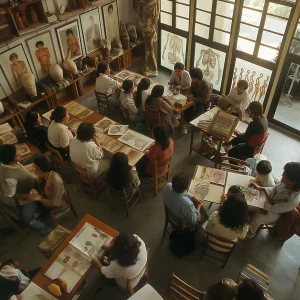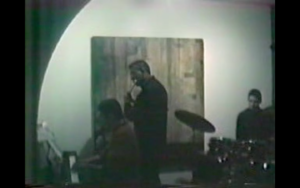
When AI becomes more human than us
AI generated illustration When AI becomes more human than us By Eduardo Menendez Throughout my professional career, I have spent a considerable amount of time
The below article was posted on taylor-code.com blog on March 20th 2017.
Being that this is the first UX article I am writing for this blog, I have given considerable thought to the topic I should cover as a starting point. UX is such a vast arena that it is not easy to pick a topic.
In my almost eight years of experience as a UX Designer (aka Product Designer), I always come back to common ground when working on any project. UX is misunderstood in almost every place I have worked and even interviewed.
Some people, among them recruiters, think that being a UX means being able to create boxes connected to lines (also called Wireframes). They think the discipline is about creating a document that is simply a checklist of things required for an interactive project. Some even request a UX at the end of a project so they can comply on the deliverables to their clients. In both of these cases the role is anything but UX; you just become an individual who updates a document, almost like a monkey or an automata. They disregard the real core aspect of it: the thinking process.
After attending many conferences and meetups, having numerous discussions with colleagues, and interviewing various UX candidates, I confirmed that I wasn’t alone in my views. Many agencies or shops have just ONE UX person – a one-person team department also referred to as “A Team of One.” UX practitioners usually struggle to get a position within established teams or find it hard to allocate funds in their budget to hire more people.
This situation may have a negative impact on how the product is ultimately designed. I have witnessed how once things are approved, the team and the client are happy but the product is poorly designed. And in regulated industries it takes time for you and your client to become aware of the errors; but once they come to light , the end-result may be the loss of the client and/or business, which no one wants.
Having a team is extremely relevant; you have more eyes to validate ideas and theories plus it adds another voice to a company’s culture. It balances opinions against other teams, too. How often does a UX comment get dismissed by other groups? A team helps to build the foundation for the practice in a working environment.
There are those who see the UX practice as something an art director or a marketing professional can do as a secondary role (which I am sure some can; for instance, I can also do graphic design, analytics, etc.). Some distrust us or see us as leadership competition so will try to minimize our role. I partly don’t blame them, though…there are way too many bad UX professionals in the market. But there are also good ones who add great benefit to their teams and the end product.
But aside from the fear/misunderstanding of UX, and the need for team members who can help define the role, there exists a related but not exclusive problem of the practice: creative brainstorming. It is an exercise that is still exclusively assigned to Art and Copy in many agencies. There are still places that resist the concept of collaboration across teams, based on the idea that things can be solved faster with fewer people. However, diversity of roles in a brainstorm session are vital and, if well-directed, lead to richer and better results. And UX is by essence multidisciplinary and collaborative. The goal of the practice is to actually link ideas and goals from the team and the client with what the target audience is looking for – not just creating, delivering, and updating a document.
Despite the misunderstanding, misuse, and lack of good UX professionals, the role is still hot in the existing market and we should find ways to successfully surf the wave while it lasts.

AI generated illustration When AI becomes more human than us By Eduardo Menendez Throughout my professional career, I have spent a considerable amount of time

AI generated graphic. Original documentation was lost. By Eduardo Menendez Back when the internet was still not as robust and omnipresent as it is nowadays,

A few years ago I received a Christmas gift. It was a bottle of champagne and a box of chocolates, the latter of which really

Based on a fragment from the book The Tin Drum by Günter Grass. Many years ago, while I was still a dreamer, I had too